Science Highlights, January 2020
Awards and Recognition
Accelerator Operations and Technology
Next-gen accelerator design: First-ever U.S. C-band RF test facility under commissioning
Materials Science and Technology
Advances in aerial payload vessels: Spherical aerogel shells hold vacuum
Theoretical
Quantum Annealer Eigensolver: A revolutionary approach to a real eigenvalue problem
Optoelectronic advances: Tunable perovskite materials prompt next-gen light sources
Awards and Recognition
Brown receives Distinguished Alumni Award
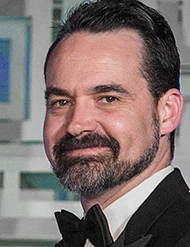
Eric Brown
Eric Brown, Explosive Science and Shock Physics Division Leader (M-DO), is honored with the 2020 Distinguished Alumni Award in the Department of Mechanical Science and Engineering from the University of Illinois at Urbana-Champaign. The award will be received at the alumni banquet on April 3, 2020.
Established in 1968, this award recognizes alum who have distinguished themselves in their profession such that they have brought honor and distinction not only to themselves but to the department and the University of Illinois.
Brown has served in leadership roles at Los Alamos National Laboratory for more than a decade. He is also the Editor-in-Chief of the Journal of Dynamic Behavior of Materials.
Technical contact: Eric Brown
Cerreta selected as 2020 VP of The Minerals, Metals & Materials Society
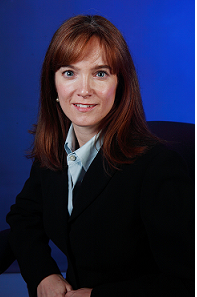
Ellen Cerreta
Ellen Cerreta, division leader of Materials Science and Technology (MST-DO), was selected by the nomination committee of The Minerals, Metals & Materials Society (TMS) to become the 2020 Vice President of the Board of Directors for the organization. With this position, Cerreta will also serve as President in 2021 and Past President in 2022. It is a three-year rotation position.
Cerreta was nominated for the position by Eric Brown, division leader of Explosive Science and Shock Physics (M-DO). She will be recognized for her new Board position as well as for her distinguished service at the organization’s 149th annual meeting: TMS 2020 will take place in San Diego, California, from February 23–27.
TMS is a 14,000-member global network of materials scientists and engineers from nearly 70 nations.
Technical contact: Ellen Cerreta
Accelerator Operations and Technology
Next-gen accelerator design: First-ever U.S. C-band RF test facility under commissioning
The new C-band Engineering Research Facility (CERF-NM) is being commissioned at the Los Alamos Neutron Science Center (LANSCE), the first such installation in the United States to provide ultra-high peak power radio frequency (RF) test capability in the C-band frequency range (4–8 GHz).
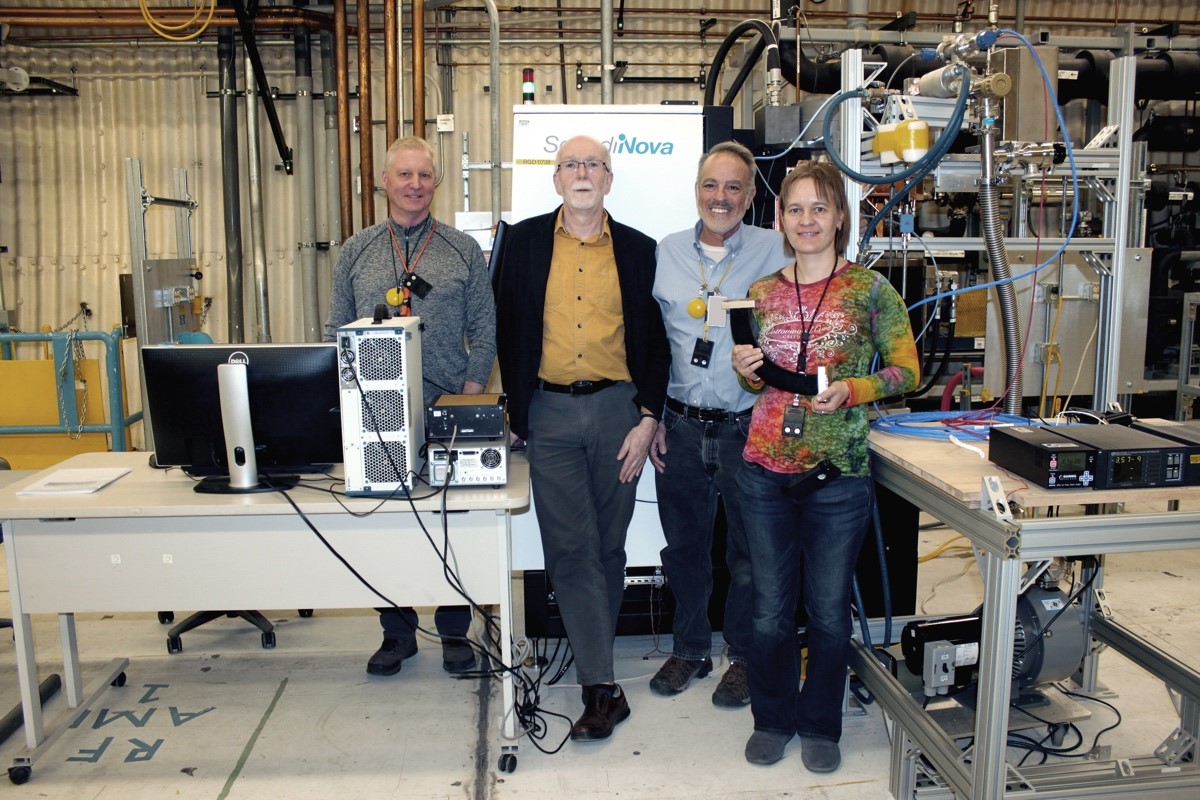
The core C-band team (from left to right): Mark Middendorf (AOT-RFE), Frank Krawczyk (AOT-AE), Mark Kirshner (AOT-RFE), and Evgenya Simakov (AOT-AE) in front of the high-power modulator and klystron.
Funded by a 2020 Laboratory Directed Research and Development (LDRD) award, the facility will be used for evaluating novel high-gradient accelerator structures at unprecedented operational levels—orders of magnitude greater than the existing LANSCE linac. This strategic investment will help LANL stay at the forefront of the emerging field of high-power radio frequency accelerator research.
C-band frequencies will support mission-critical science
Particle accelerators are established tools for national security and basic science missions. Among technologies used in traditional electron-beam accelerator systems, X-band technology (8–12 GHz) and S-band technology (2–4 GHz) are common but come with limitations. For example, X-band can achieve very high accelerating gradients but at the cost of severe beam performance limitations. S-band offers excellent beam performance but at the cost of limited high-gradient operation.
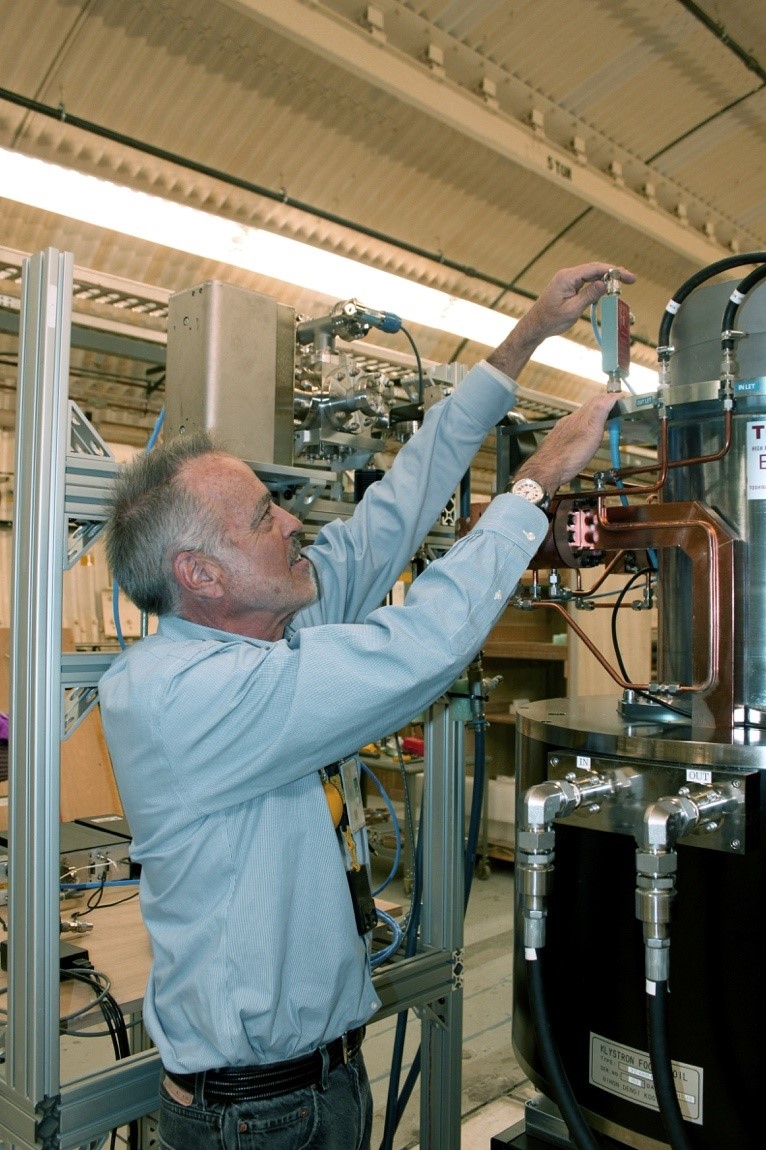
Mark Kirshner is adding a directional coupler to measure klystron input power.
Previous internal studies point to C-band technology as being ideal to meet mission needs. The C-band accelerator structures will meet efficiency standards, provide desired high gradients, and simultaneously offer excellent beam performance. Development will include structures for both compact and facility-size accelerator systems and will benefit electron and proton accelerator applications.
Internal and external collaborations
Contributing their expertise to the project are LANL staff in Theoretical, Accelerator Operations and Technology (AOT), Engineering Technology and Design, and Sigma divisions. External collaborators from the University of California, Los Angeles, and SLAC National Accelerator Laboratory, Stanford University, will also contribute to the development and testing. The collaborations are expected to provide funding for additional infrastructure with the long-term goal to construct a full beam-line for experimental work on accelerator technology.
Funding and mission
This work is funded through a FY20 LDRD Directed Research project. Initial materials modeling studies performed in 2018 to assess project feasibility were also funded by the LDRD program. The work supports the Laboratory’s Nuclear Deterrence mission and the Nuclear and Particle Futures capability pillar.
Technical contacts: Mark Kirshner and Frank Krawczyk
Materials Science and Technology
Advances in aerial payload vessels: Spherical aerogel shells hold vacuum
Is it possible to create an air-buoyant solid—a material that floats without helium or hot air? Can it hold a vacuum? Engineered Materials (MST-7) scientists at Los Alamos are researching both those questions, and they are more confident than ever that both answers will be yes. Their latest research proved the answer to the second question that an aerogel shell can indeed hold a vacuum.
The shell was made of a polyimide aerogel—an ultralight synthetic material comprised of mostly empty space. The capability to hold a vacuum was a welcome surprise to the researchers, who expected that air would permeate freely through the material’s void space.
“The behaviors we’ve observed for these materials have surpassed our expectations and will likely lead to applications we hadn’t anticipated,” said Miles Beaux, principal investigator.
The scientists' work is part of an effort to capitalize on the low density of aerogel materials and produce a vacuum vessel light enough to achieve buoyancy in air when evacuated. The proposed vacuum vessel would be an alternative to helium-lofted payloads used in scientific and military ballooning applications, but there are many commercial applications as well.
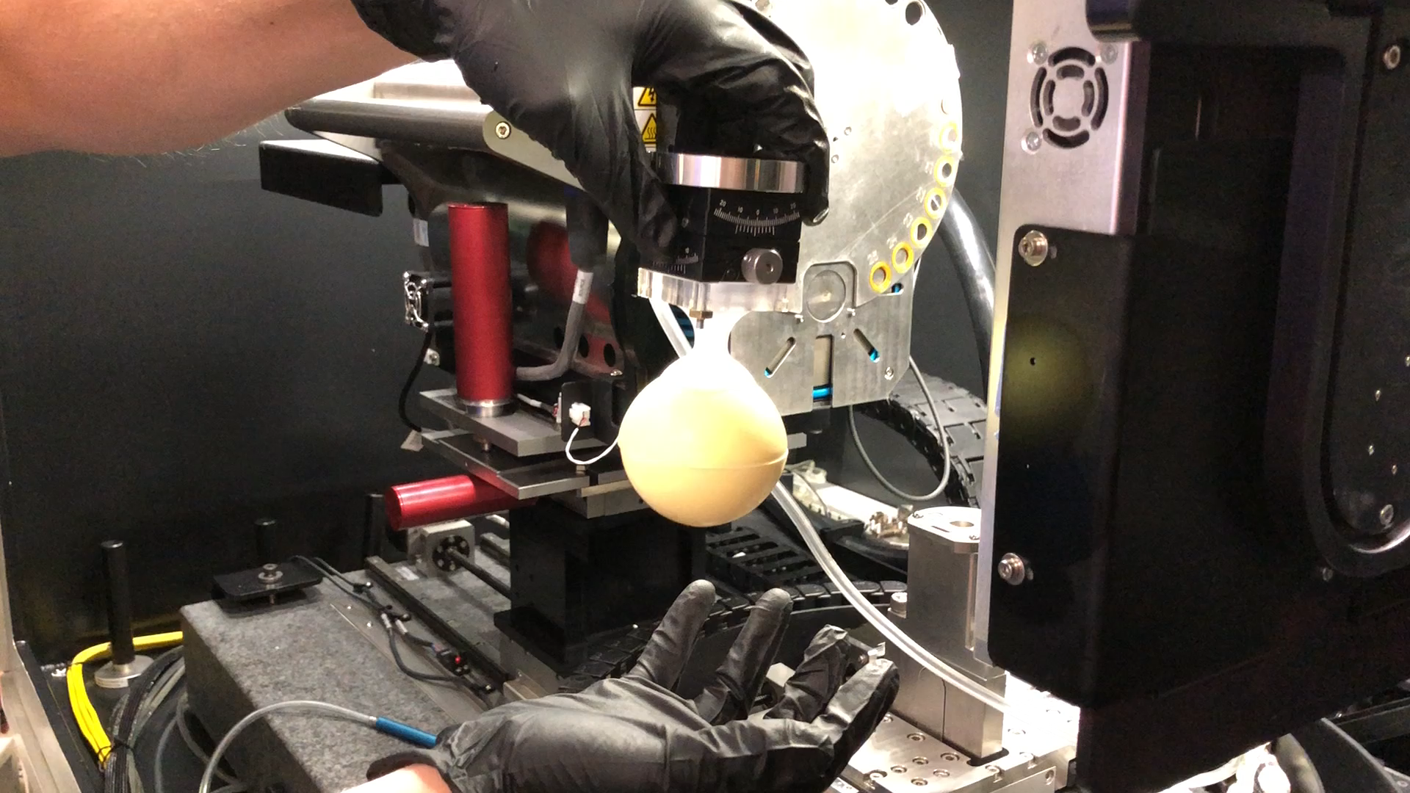
A hollow spherical shell of polyimide aerogel, 6 cm in diameter with a wall thickness of 4 mm and an internal pressure less than 1 torr, is held upside down by its vacuum chuck. The aerogel density is about 120 mg/cm3.
Like a balloon that lasts forever
Helium balloons may be common, but helium is expensive and balloons don’t float forever; there is a lifetime associated with these filled vessels. Spheres made from aerogel, however, could be filled with nothing (vacuum) and remain floating in air forever.
The groundwork for this goal has now been established. The Los Alamos researchers noted that the degree to which the aerogel material can hold vacuum corresponds to an optimal density. The team hypothesized local deformations of the random nanostructured lattice of the material are responsible for the air impermeability.
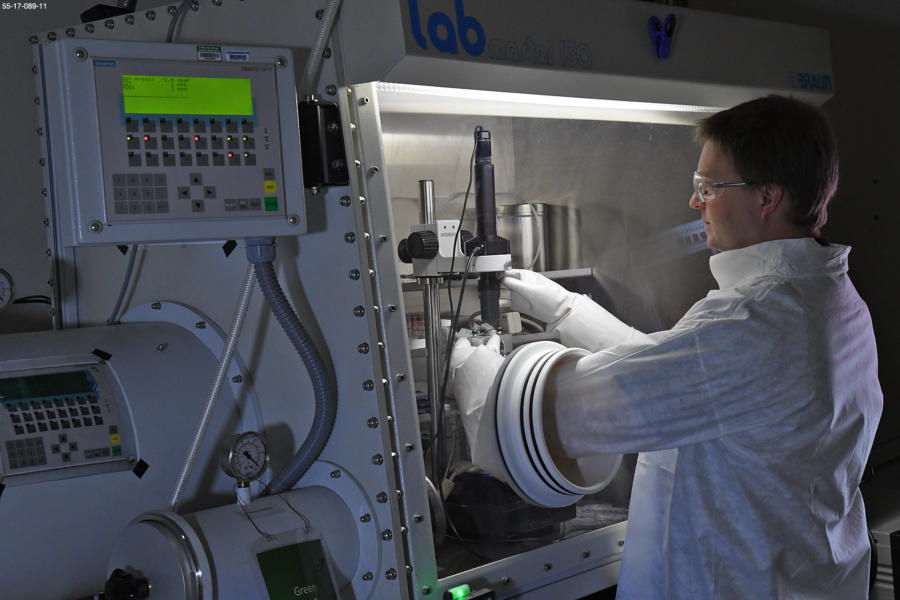
Miles Beaux’s concept of using aerogel vacuum vessel supported floating WiFi hotspots received Best Pitch at LANL’s 2017 DistrupTECH. This 2019 research has significantly advanced the development of this technology.
The sphere was created by molding two hemisphere shells of polyimide and sanding the equatorial surface to create a smooth contact between the two shells. To create the vacuum, the interior space of the aerogel sphere was evacuated using a roughing pump. The sphere did not measurably deform, even down to an internal pressure of less than 1 torr. Low-vacuum conditions were achieved even when there was minimal overlap of the two hemisphere shells. Without active pumping, the vacuum vessel was supported by atmospheric pressure for approximately 50 seconds before the sphere fell from its inverted vacuum chuck.
The vacuum vessel also showed resistance in gentle- to medium-impact blows. The sphere remained intact when struck with a ball-peen hammer. It took a very heavy blow to actually punch through the sphere.
Funding and mission
The MST-7 research team includes B. Patterson, B. Bennett, L. Kuettner, V. Siller, C. Hamilton, I. Usov, and M. Beaux (PI). The work is supported by the LANL Laboratory Directed Research and Development (LDRD) Program and follows prior seed funding from the Institute for Materials Science. This work is relevant to air buoyant payload applications of interest to the Defense Threat Reduction Agency and the National Reconnaissance Office. The work supports the Laboratory’s Global Security mission and the Materials for the Future capability pillar.
Technical contact: Miles Beaux
Theoretical
Quantum Annealer Eigensolver: A revolutionary approach to a real eigenvalue problem
Los Alamos National Laboratory is home to a state-of-the-art piece of equipment called a D-Wave quantum annealer. Researchers from LANL’s Theoretical division along with a collaborator at Marquette University created the first general quantum annealer-based eigenvalue solver to calculate the vibrational spectrum of a molecule using LANL’s D-Wave quantum annealer.
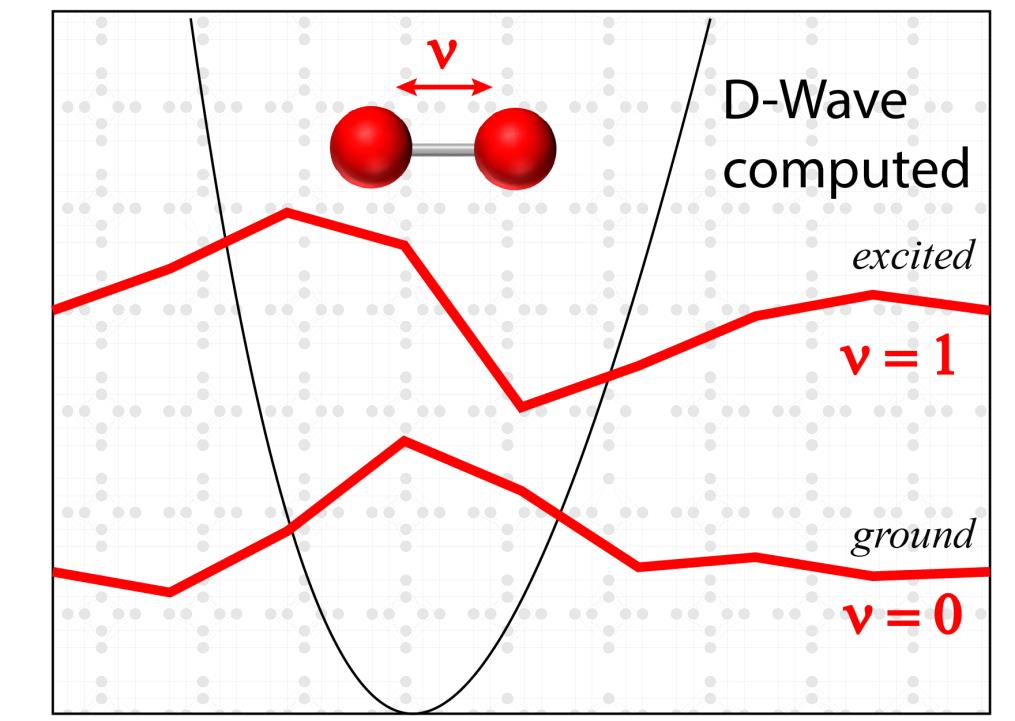
The D-Wave-computed ground and first excited state vibrational wave functions of O2 are plotted in red. The attractive interaction potential between the two oxygen atoms (red spheres) is plotted in black. The vibrational state is labeled by the quantum number ν, where ν=0 is the ground state and ν=1 is the first excited state.
Traditionally, a different type of quantum computer, a gate-based computer, has been used for molecular energy calculations. In order to solve these calculations using the D-Wave, these researchers created a new approach—one that employed software to map the ground state variational problem onto an Ising or quadratic unconstrained binary optimization (QUBO) and express the expansion coefficients using spins or qubits.
Expanding D-Wave’s practical application
Calculating the vibrational spectrum of a molecule is an example of an important fundamental problem. There are many other fundamental problems that can be solved using the same methodology. Therefore, this niche research of calculating the vibrational states of oxygen and ozone actually expands D-Wave’s practical application in a significant way.
Their solver, called the Quantum Annealer Eigensolver (QAE), solves any real symmetric eigenvalue problem. The problem is solved via a sequence of many quantum annealer optimizations performed with varying weights on the constraint equations (i.e., Lagrange multipliers). This part happens on a classical computer. Next, the eigenvalue problem is mapped to a QUBO problem on the D-Wave quantum annealer.
The researchers successfully calculated the lowest vibrational states of oxygen and ozone using QAE. They also identified several ways in which they could improve upon the process. One is dependent on hardware improvements, which are already planned for LANL’s D-Wave.
Funding and mission
This research was supported by a LANL Laboratory Directed Research and Development award. It supports the Laboratory’s Global Security mission area and the Integrating Information, Science, and Technology for Prediction capability pillar.
Reference: A. Teplukhin (T-1), B. K. Kendrick (T-1), and D. Babikov (Marquette University). “Calculation of Molecular Vibrational Spectra on a Quantum Annealer.” J. Chem. Theory Comput. 2019, 15, 8, 4555–4563. DOI 10.1021/acs.jctc.9b00402
Technical contact: Alexander Teplukhin
Optoelectronic advances: Tunable perovskite materials prompt next-gen light sources
Los Alamos researchers collaborated with scientists at the University of Illinois at Urbana-Champaign, Rice University, and University Rennes to advance a particular type of material—2D layered hybrid metal–halide organic perovskite (LHOP). LHOPs are popular optoelectronic materials, relevant for highly efficient solar cells, tuned light-emitting diodes, and the burgeoning field of spintronics.
These researchers paired LHOPs with various organic spacers between the perovskite layers in order to predict and control material properties. This advancement is key for next-generation light sources.
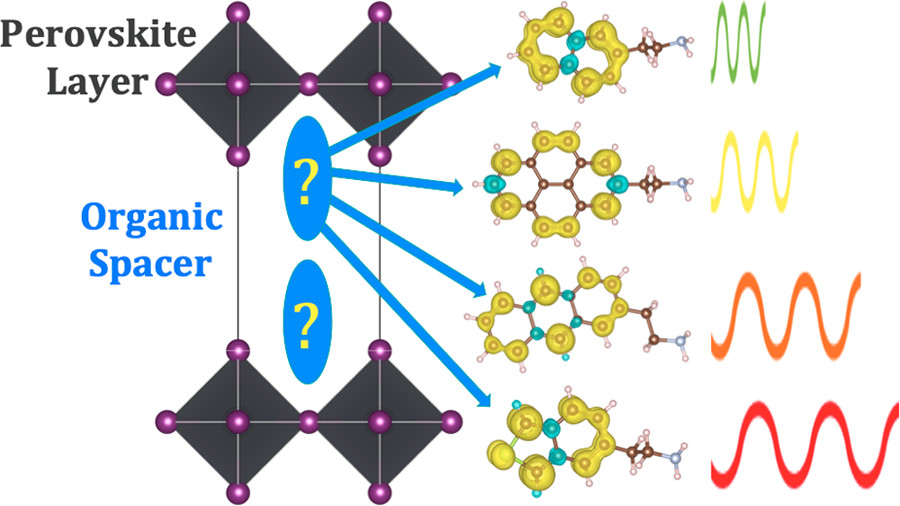
Example of how different organic spacers within the perovskite structure could emit different colored light.
Spacer choice influences key material properties
The researchers deciphered 10 different organic spacers to pair with perovskite layers for desirable properties. These 10 choices were determined via first-principles simulations to calculate singlet excitation, triplet excitation, and the energy gap between the highest occupied and lowest unoccupied molecular orbitals (HOMO–LUMO gap).
The spacer choice heavily influences electronic and optical properties of the LHOP, and these calculations allowed the researchers to quickly parse through spacer choices. Their Density Functional Theory simulation approach was far faster than experimental methods at identifying ideal material combinations.
In particular, the 10 spacers paired with perovskites of specific halide composition will enable triplet light emission across the visible energy range and offer potential solutions for tuned light emission applications. This is an enhancement that will prompt the invention of next-generation, wavelength-tuned, highly efficient light sources.
Funding and mission
The work was supported by a Laboratory Directed Research and Development (LDRD) grant. This work was conducted, in part, at the Center for Nonlinear Studies and the Center for Integrated Nanotechnologies, U.S. Department of Energy (DOE), Office of Basic Energy Sciences user facility at LANL. Resources were provided by the LANL Institutional Computing (IC) Program. The research supports the Laboratory’s Energy Security mission area and the Materials for the Future capability pillar.
Reference: J. Leveillee (U. of Illinois at Urbana-Champaign), C. Katan (U. Rennes, France), J. Even (U. Rennes, France), D. Ghosh (T-1), W. Nie (MPA-11), A.D. Mohite (Rice University), S. Tretiak (T-1), A. Schleife (U. of Illinois at Urbana-Champaign), A. J. Neukirch (T-1). “Tuning electronic structure in layered hybrid perovskites with organic spacer substitution.” Nano Lett. 19(12), 8732–8740 (2019). https://doi.org/10.1021/acs.nanolett.9b03427
Technical contact: Dibyajyoti Ghosh
X-Computational Physics
MCNP enhancement improves simulation efficiency up to 1,000 times
One of LANL’s flagship codes, Monte Carlo N-Particle (MCNP), was recently enhanced. By coupling MCNP to another LANL code, called Parallel Time-Dependent SN (PARTISN), Los Alamos scientists were able to improve the radiation transport capabilities of MCNP without increasing the computational cost.
This enhancement improved Stockpile Stewardship-related simulations in terms of solution quality by up to 1,000 times.
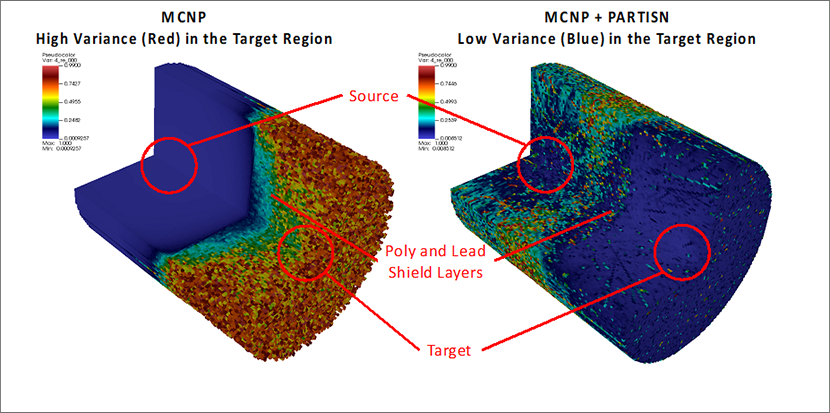
Solution quality of original MCNP compared to MCNP informed by PARTISN. Statistical noise (variance) is significantly reduced in the important region (the target) for roughly the same computational cost.
MCNP + PARTISN
MCNP is a versatile code for neutron, photon, electron, or coupled neutron/photon/electron transport. Although its distribution is limited—overseen by the Radiation Safety Information Computational Center in Oak Ridge, Tennessee, and the Nuclear Energy Agency in Paris, France—MCNP is sought for radiation protection and dosimetry, radiation shielding, radiography, medical physics, nuclear criticality safety, detector design and analysis, nuclear oil well logging, accelerator target design, fission and fusion reactor design, and decontamination and decommissioning.
MCNP produces high-fidelity results, but greater computational expense is required to reduce statistical noise (also called variance). Los Alamos scientists were able to reduce that noise without the usual increase in computational cost by employing PARTISN.
Alone, PARTISN can offer solutions to the same MCNP problems, but typically at lower computational cost and discretization errors. Separately, the codes have trade-offs. In combination, however, they offer the best of both worlds.
When used together, PARTISN informs MCNP where to focus its computational effort in order to reduce variance in important regions of the simulation. This allows for an increase in solution quality without an increase in computational cost. MCNP + PARTISN is a streamlined tool that enhances the performance of LANL’s Stockpile Stewardship Program simulation capabilities.
Funding and mission
This work was funded by the NNSA Advanced Simulation and Computing Program. The enhancement supports the Laboratory’s Nuclear Deterrence mission area and the Nuclear and Particle Futures and Information, Science & Technology capability pillars.
Researchers: Steve Wilson (XCP-3), Scott Mosher (XCP-3), Travis Trahan (XCP-3), Randy Baker (CCS-2), Tommy Saller (CCS-2), and Jon Dahl (CCS-2).
Technical contact: Rob Lowrie, XCP-DO, ASC Integrated Codes Program Manager






